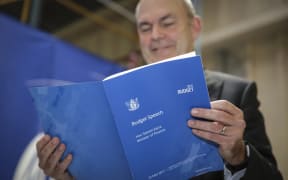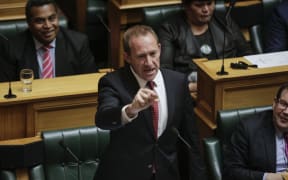The government is forecasting stronger economic growth, but lower surpluses than previously estimated.

The Treasury expects the economy to grow but warned of global threats. Photo: 123rf.com
The economy is expected to grow at an average 3.1 percent over the next five years, driven by robust population growth, investment in construction projects, booming tourist numbers and a rebound in exports.
Finance Minister Steven Joyce said the positive outlook was driven by the government's strong economic plan and confident New Zealand companies which were investing, innovating, exporting and creating skilled jobs.
Treasury is forecasting growth will rise from 3.1 percent in the June 2017 year to peak at 3.8 percent in 2019, before easing back to 2.4 percent by 2021.
But it warns there are threats, including a rise in protectionism globally, debt-fuelled growth in China, and the effect of rising interest rates on the housing market in New Zealand.
Westpac Bank senior economist Satish Ranchhod said the forecasts appeared optimistic.
But he said the government's plans to boost the incomes of low and middle earners should help cushion the effects of the slowdown.
"Some of the big drivers of the growth that we've seen in recent years are starting to fade, that includes the housing market.
"But the stimulus that's in today's budget that should help to brace the economy, keep us going at 3 percent for some time, but as we look to the later part of the projection period in the budget we do have some concerns that things might not be as strong as the government's assuming."
An additional 215,000 people are expected to be in work by 2021, though unemployment is set to remain at 5 percent over the next few years, due to more people in the workforce, before easing to 4.3 percent.
The stronger economy will boost the government's coffers, with rising surpluses predicted over the next five years.
New spending has been lifted to $1.8bn from $1.5bn this financial year, to $1.7bn next year, and increasing by 2 percent a year after that.
Excluding investment gains and losses, the Treasury forecasts a $1.6bn surplus in 2017, gradually climbing to $7.2bn in 2021.
The surpluses are smaller than earlier estimates, mainly due to the government's tax and income support changes, which are estimated to cost about $2bn a year.
Mr Joyce said spending was under control, and a stronger economic outlook meant revenue was broadly in line with the Half-Year Update and considerably stronger than expected in Budget 2016, despite the government's decision to adjust tax thresholds and lift income support through the Family Incomes Package.
New capital spending on roads, rail, schools and hospitals has been increased by $4bn over the next five years.
Mr Joyce said the surpluses were significant, but were necessary to meet the cost of the very large new capital investment the government had committed to.
Net debt is set to decline over time to under 20 percent of gross domestic product by 2021.
Want more detail? Read RNZ's full Budget coverage here.









